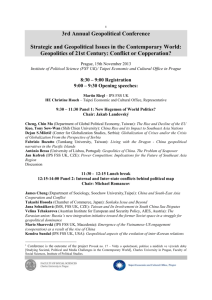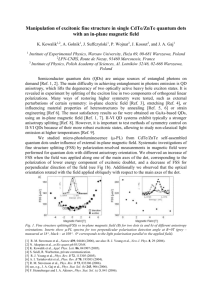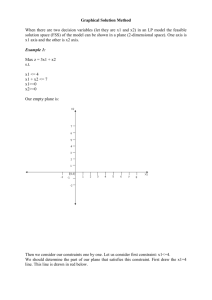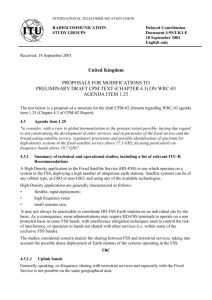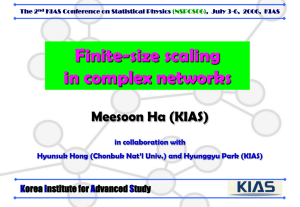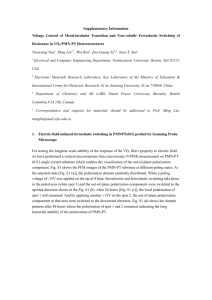supplementary text
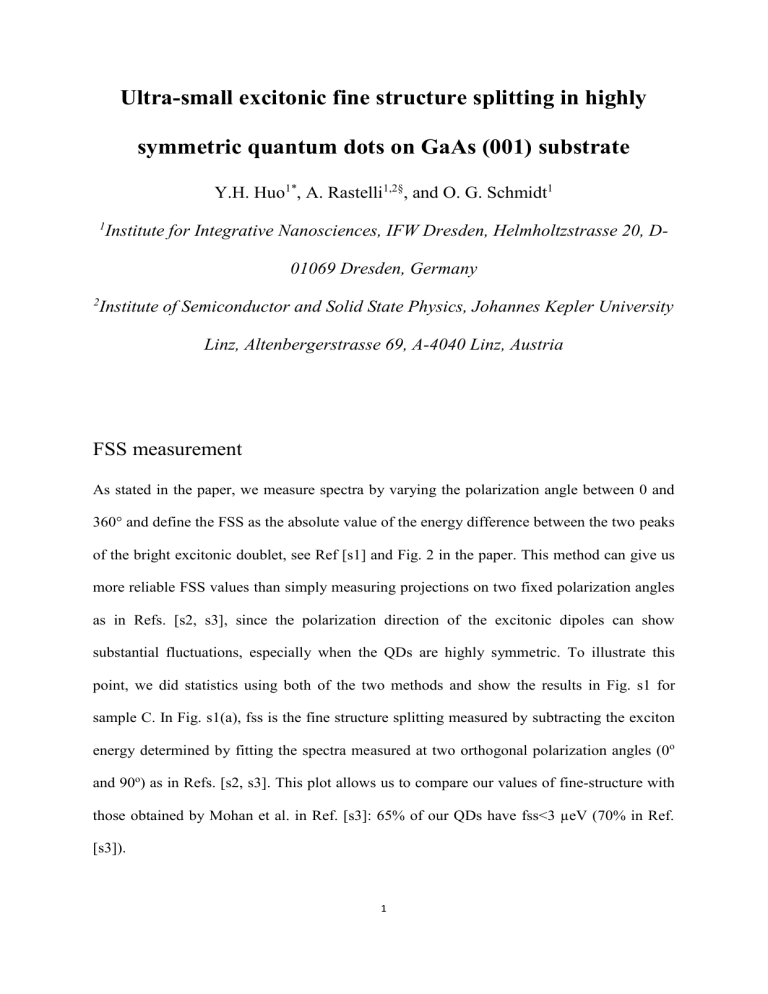
Ultra-small excitonic fine structure splitting in highly symmetric quantum dots on GaAs (001) substrate
Y.H. Huo 1* , A. Rastelli 1,2§ , and O. G. Schmidt 1
1 Institute for Integrative Nanosciences, IFW Dresden, Helmholtzstrasse 20, D-
01069 Dresden, Germany
2 Institute of Semiconductor and Solid State Physics, Johannes Kepler University
Linz, Altenbergerstrasse 69, A-4040 Linz, Austria
FSS measurement
As stated in the paper, we measure spectra by varying the polarization angle between 0 and
360° and define the FSS as the absolute value of the energy difference between the two peaks of the bright excitonic doublet, see Ref [s1] and Fig. 2 in the paper. This method can give us more reliable FSS values than simply measuring projections on two fixed polarization angles as in Refs. [s2, s3], since the polarization direction of the excitonic dipoles can show substantial fluctuations, especially when the QDs are highly symmetric. To illustrate this point, we did statistics using both of the two methods and show the results in Fig. s1 for sample C. In Fig. s1(a), fss is the fine structure splitting measured by subtracting the exciton energy determined by fitting the spectra measured at two orthogonal polarization angles (0 o and 90 o ) as in Refs. [s2, s3]. This plot allows us to compare our values of fine-structure with those obtained by Mohan et al. in Ref. [s3]: 65% of our QDs have fss<3 µeV (70% in Ref.
[s3]).
1
In Fig. s1(b), abs(fss) is the absolute value of fss in Fig. s1(a). FSS is the corresponding fine structure splitting measured by using spectra collected over the whole range of polarization angles. From the figures, we can see that data measured using two fixed orthogonal angles are in most of the cases smaller than the real FSS. Depending on the orientation of the polarization directions of the excitonic emission with respect to the chosen direction, misleading results (apparent 0 fine-structure splitting) can be obtained. This comparison demonstrates the importance of determining both the polarization direction and FSS by rotating the polarization analyzer in small steps.
Fig. s1. (a) "Apparent" fine structure splitting (fss) measured by subtracting the exciton energy determined at two fixed orthogonal polarization directions (0 o
and 90 o
). (b) Absolute values of fss vs the "real" FSS determined as in Ref. s1, i.e. by varying the polarization angle between 0 and 360°.
[s1] J. D. Plumhof, V. Křápek, L. Wang, A. Schliwa, D. Bimberg, A. Rastelli, and O. G.
Schmidt, Phys. Rev. B 81 , 121309 (R) (2010).
[s2] R. J. Young, R. M. Stevenson, A. J. Shields, P. Atkinson, K. Cooper, D. A. Ritchie, K.
M. Groom, A. I. Tartakovskii, and M. S. Skolnick, Phys, Rev. B 72 , 113305 (2005).
2
[s3] A. Mohan, M. Felici, P. Gallo, B. Dwir, A. Rudra, J. Faist, and E. Kapon, Nature
Photonics 4 , 302 (2010).
3



